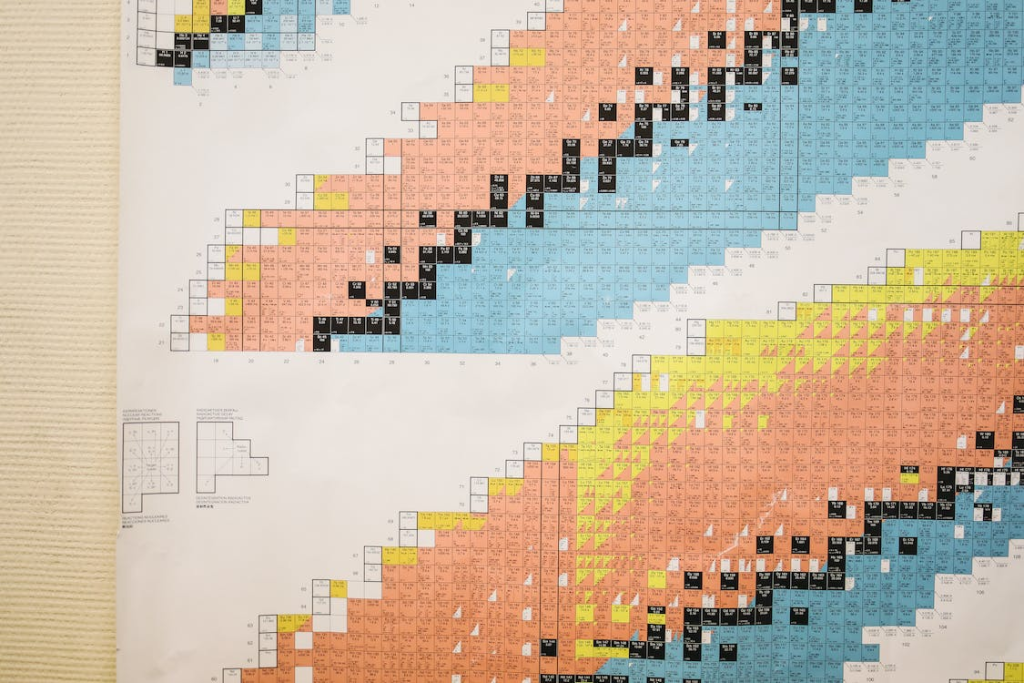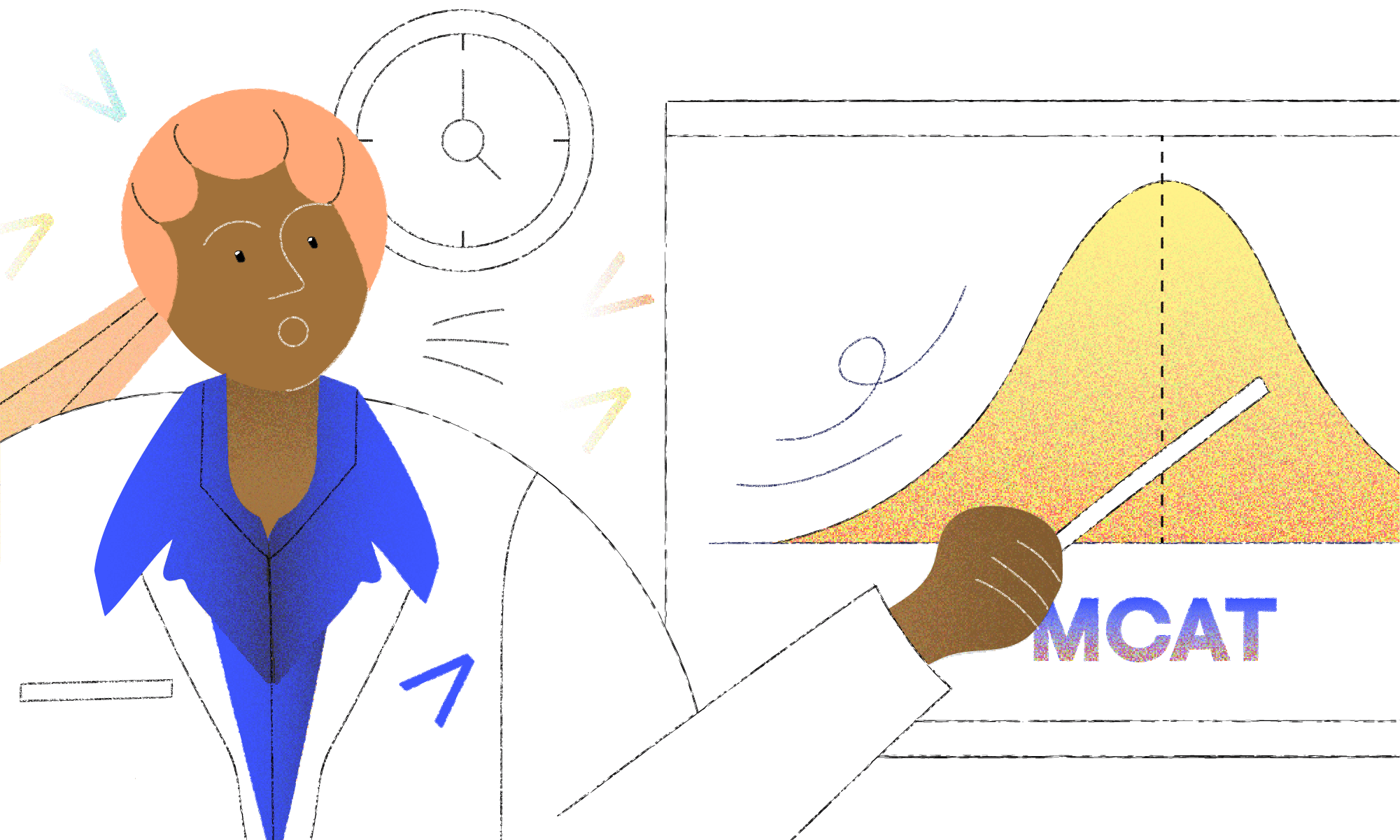
How to Understand the MCAT Periodic Table & Trends?

The Medical College Admission Test (MCAT) is a standardized exam assessing an applicant’s medical school readiness. It tests the candidate’s knowledge of basic sciences, including chemistry, biology, and physics. In the MCAT’s Chemical and Physical Foundations of Biological Systems section, students must understand the periodic table and its trends. This blog post will comprehensively understand the MCAT periodic table and trends.
The MCAT Periodic Table: A Quick Overview
The periodic table is a tabular arrangement of elements based on their atomic structure and properties. The MCAT periodic table is similar to the standard periodic table but contains additional information relevant to the MCAT exam. Some of the features of the MCAT periodic table include the following:
- Atomic mass: This is the mass of an atom of an element, measured in atomic mass units (amu).
- Atomic number: This is the number of protons in the nucleus of an atom of an element. It is also equal to the number of electrons in a neutral atom of that element.
- Symbol: This is the one or two-letter abbreviation representing an element.
- Name: This is the name of the element.
- Electronegativity: This measures an atom’s ability to attract electrons toward itself in a chemical bond.
- Ionization energy: This is the energy required to remove an electron from an atom in the gas phase.
- Electron affinity: This is the energy released when an electron is added to an atom in the gas phase.

Do You Get a Periodic Table on the MCAT?
The MCAT periodic table is provided in the exam, so it’s important to know how to use it. Ensure you are familiar with the symbols, atomic numbers, and atomic masses of the elements, as well as the locations of essential groups such as the halogens and the noble gases.
Understanding MCAT Periodic Table Trends
Periodic trends refer to the predictable patterns in the properties of elements as you move across and down the periodic table. Some of the important periodic trends that you need to understand for the MCAT include:
Atomic Radius
This is the distance from the center of the nucleus to the outermost electron in an atom. Atomic radius increases as you move down a group (column) in the periodic table and decreases across a period (row) from left to right. This is because as you move down a group, energy levels (shells) increase and the outermost electrons are farther away from the nucleus.
As you move across a period, the number of protons and electrons increases, but energy levels remain the same. This results in a stronger attractive force between the nucleus and a smaller atomic radius of the outermost electrons.
Electronegativity
This is the tendency of an atom to attract electrons toward itself in a chemical bond. Electronegativity increases as you move across a period from left to right and decreases as you move down a group.
This is because as you move across a period, the number of protons and electrons increases, making the nucleus more positive and attracting electrons more strongly. As you move down a group, energy levels increase, and the outermost electrons are farther away from the nucleus, reducing the attraction.
Ionization Energy
This is the energy required to remove an electron from an atom in the gas phase. Ionization energy increases as you move across a period from left to right and decreases as you move down a group.
This is because as you move across a period, the number of protons and electrons increases, making the nucleus more positive and attracting electrons more strongly. As you move down a group, the outermost electrons are farther away from the nucleus and experience less attraction, making them easier to remove.
Electron Affinity
This energy is released when an electron is added to an atom in the gas phase. Electron affinity generally increases as you move across a period from left to right and decreases as you move down a group.
This is because as you move across a period, the atomic radius decreases, making the addition of an electron more favorable. As you move down a group, the outermost electrons are farther away from the nucleus and experience less attraction, making the addition of an electron less favorable.
Tips for Understanding the MCAT Periodic Table
- Memorize the periodic trends: As mentioned earlier, understanding the periodic trends is crucial for the MCAT exam. Memorizing the MCAT periodic table trends can help you quickly identify patterns in the properties of elements, allowing you to answer questions more efficiently.
- Use the periodic table as a reference: You are given an MCAT periodic table for the exam so make sure you refer to it.
- Practice with sample questions: Practice is key to understanding the MCAT periodic table and trends. Ensure you work through plenty of sample questions that test your knowledge of the periodic table and its trends. This will help you identify areas where you need more practice and build confidence.
- Understand the relationship between electron configuration and periodic trends: The periodic trends can be explained by the electron configuration of the elements. Understanding how the electrons are arranged in the atoms of each element can help you understand why certain trends occur.
- Be aware of exceptions to the periodic trends: While the periodic trends are generally predictable, there are some exceptions. For example, the atomic radius of the noble gases is smaller than expected due to the stable electron configuration of an entire outer shell. Awareness of these exceptions can help you avoid common mistakes on the MCAT exam.
What are Some Effective Ways to Remember the MCAT Periodic Table Trends?
Here are some more detailed explanations of each of these effective ways to remember the periodic table trends:
Acronyms
Acronyms can be a helpful tool for remembering the periodic table trends. One example is “BEAR,” which stands for basicity, electronegativity, electron affinity, and ionization energy. Another example is “PACMAN,” which stands for periodicity, atomic size, charge, electronegativity, and metallic character. By memorizing these acronyms, you can easily recall the different trends for each property.
Mnemonics
Mnemonics are memory aids that can help you remember the order of the elements on the periodic table. One example is the classic mnemonic “HHeLiBeBCNOF” (pronounced ‘heeliebeb kernoff) which stands for the first two letters of the first elements in order. You could also make up a song or a story to help remember the order of the elements.
Practice
One of the most effective ways to remember the MCAT periodic table trends is to practice regularly. This can include working through sample questions and quizzes to reinforce your knowledge of the trends. By regularly reviewing the periodic table and practicing with sample problems, you’ll be better equipped to remember the trends when it comes time for a test.
In addition to these methods, it’s also important to understand the underlying principles behind each trend. For example, the atomic radius decreases from left to right across a period because the increasing number of protons in the nucleus pulls the electrons closer to the center of the atom.
By understanding the principles behind each trend, you’ll have a deeper understanding of the periodic table and be better equipped to remember the trends.

Bottom Line
In conclusion, understanding the MCAT periodic table and trends is essential for success in the chemistry section of the exam. By memorizing the periodic trends, using the periodic table as a reference, practicing with sample questions, understanding the relationship between electron configuration and periodic trends, and being aware of exceptions to the periodic trends, you can confidently approach any query related to the periodic table on the MCAT. If you would like support with MCAT revision, why not contact an MCAT tutor online to see how we can help.
General tips and informative articles on the MCAT:
MCAT differs from other medical exams:
Frequently Asked Questions (FAQs)
→ What is the significance of understanding MCAT periodic table trends for the exam?
Understanding periodic table trends is crucial for success in the chemistry section of the MCAT exam. Familiarity with the periodic table and its trends can help you answer questions more efficiently and accurately.
→ How can electron configuration explain the MCAT periodic table trends?
The electron configuration of the elements can explain the periodic trends. As the number of protons in the nucleus increases, the electrons are pulled closer to the nucleus, making the atom smaller. The arrangement of electrons in the outermost shell also affects the properties of the elements, such as electronegativity and ionization energy.
→ What are some common exceptions to the periodic trends?
- The noble gases have a smaller atomic radius than expected due to their stable electron configuration.
- The electron affinity of group 2 elements is less than expected due to the filled electron subshells.
- The ionization energy of transition metals is less predictable due to their partially-filled d subshells.
→ How can I use the MCAT periodic table as a reference during the exam?
The MCAT exam provides a periodic table for reference, so it’s important to know its layout and the location of essential groups and elements. You should use the periodic table to quickly look up atomic numbers, symbols, and atomic masses of elements. Always cross-reference the periodic table with periodic trends to help identify patterns and answer questions more efficiently.







Was this article helpful?
Still got a question? Leave a comment